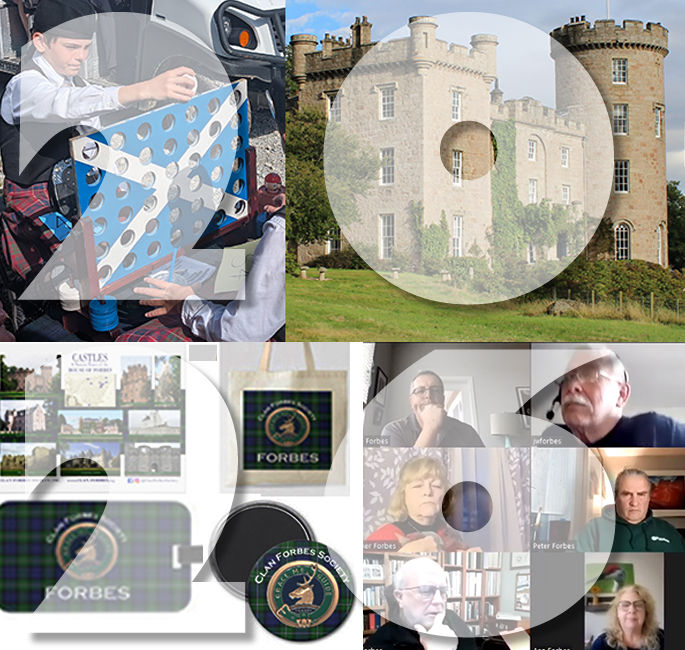Bellabeg House
- Bart Forbes

- Aug 30, 2023
- 3 min read
Historic Bellabeg House, located in the hamlet of Bellabeg in Strathdon, links Forbes heritage to the modern era. The mansion house overlooks the Lonach field, the site of the annual Lonach Highland Gathering and Games.

Originally called Invernochty, or confluence of the Water of Nochty, Bellabeg is the site of a large motte, or mound, of the Pictish Doune of Invernochty. This is from the Scottish Gaelic “dùn” which means “castle” or “fortress.” The settlement was later called Bellabeg, an anglicization of Scottish Gaelic “Am Baile Beag,” or the small farmtown.
The estate of Bellabeg was originally owned by the Earl of Mar who granted the land to the Farquharsons. (Tayler, Alistair and Henrietta. 1937. House of Forbes. Edinburgh: Third Spalding Club.) The last was James Farquharson, who had married Isabel Forbes, eldest daughter of Alexander Forbes, 1st laird of Newe. Upon his death, the estate was inherited by their eldest daughter, also called Isabel, who married George Forbes (1668 - 1745), third son of William Forbes, 5th laird of Newe. (Ibid.)
Their son, John Forbes, 2nd of Bellabeg, was born here in 1707 and married Christian Shepherd in 1737. They greatly renovated Bellabeg House in 1765 and the armorial panel over the front door bears their initials and the motto “NON TEMERE,” be not afraid. (Grant, John, Editor. 1901. The Records of Invercauld: 1547 - 1828. Aberdeen: New Spalding Club.)

The Statistical Account mentions that “the late Mr Forbes of Bellabeg was the first in this part of the country who began to plant. His improvements, considering the smallness of his property, are worthy of notice. He possessed only one farm ... and a mill. ... He built a commodious mansion-house and offices.” (The Statistical Accounts of Scotland (1791-99),Strathdon, County of Aberdeen, OSA, VOL. XIII, 1794
This red granite mansion house has two stories and an attic, with five windows. The central bay is crowned by a semicircular wallhead. (Shepherd, Ian. 2006. Aberdeenshire: Donside and Strathbogie - An Illustrated Architectural Guide. London: Rutland Press.) The house is described as being “an outstanding early laird's house displaying fine proportions and simplicity of design enhanced by a shaped central gable. The kitchen wing, formerly an independent dwelling, is almost certainly earlier and boasts a fireplace opening seen in just a handful of other dwellings in the area.” (Historic Environment Scotland, Bellabeg House.)
Except for a brief period during WWI when Bellabeg House served as a hospital for Belgian soldiers, it has always been used as a home. “The chevron patterned timber fences facing the main road at the northern boundary are believed to have been erected by Belgian soldiers.” (“Bellabeg House,” Aberdeenshire Council, Historic Environment Records, last updated 2023.)

Bellabeg House is not only a well-known landmark but the subject of a popular strathspey, a piece of music written for a slow Scottish dance. “The Bellabeg House” is a composition by Aberdeenshire fiddler-composer Alexander Walker, born in Rhynie, Strathbogie, in 1819. “Walker was a fiddler and composer of works collected in a volume published in Aberdeen in 1866. He was employed as a gardener for Sir Charles Forbes at Castle Newe, who was also his patron.” (Thomas, Allen. 1992. A New Most Excellent Dancing Master. Hillsdale, NY: Pendragon Press.)
See the Facebook video of the Lonach Pipe Band leaving Bellabeg House (whisky dram stop number 5) on its way to the 2019 Lonach Highland Gathering and Games (note the chevron fence) : https://www.facebook.com/watch/?v=1289348855289034
Hear the Lonach Pipe Band play “Bellabeg House” before they march off after the field of the 2019 Lonach Highland Gathering and Games: https://www.youtube.com/watch?v=jLZPAJw8BqI




Comments